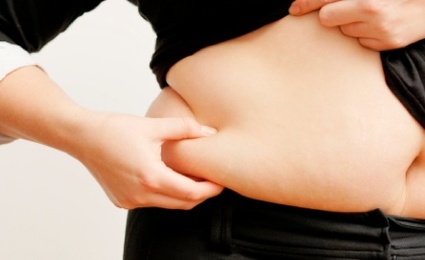The Secret of Weight and Fat Loss in Obesity
Dr. Pham Hoang Trung
Obesity is defined as body weight is over 20% compared with the standard weight proportionate with a person’s body height. For example, a 5-feet-tall person (1.52 meters) should proportionately weigh between 102 and 118 pounds. If this person weighs more than 142 pounds, he or she is considered obese. Please consult the following chart.
| |
Comparative chart of height and standard weight vs. those of obese people
|
|
| |
HEIGHT |
STANDARD WEIGHT *
in pounds |
WEIGHT OF
OBESE PEOPLE |
|
| |
58 inches / 1,47 meters |
96-110 |
132 |
|
| |
59 inches / 1,50 meters |
99-114 |
137 |
|
| |
60 inches / 1,52 meters |
102-118 |
142 |
|
| |
61 inches / 1,55 meters |
106-122 |
146 |
|
| |
62 inches / 1,57 meters |
109-126 |
151 |
|
| |
63 inches / 1,60 meters |
113-130 |
156 |
|
| |
64 inches / 1,62 meters |
116-134 |
161 |
|
| |
65 inches / 1,65 meters |
120-138 |
166 |
|
| |
66 inches / 1,68 meters |
124-142 |
170 |
|
| |
67 inches / 1,70 meters |
127-146 |
175 |
|
| |
* The standard weight can fluctuate by a few pounds according to a person’s stature or his/her bone size.
– Between standard weight and obesity there can be overweight, slight obesity, and obesity. |
|
Calories are the most important factor that can make us fat or skinny. When the calories taken in through food exceed the necessary calories to maintain the body’s activity, the person becomes fat. When the reverse happens, the person becomes thin.
In nutrition, calories are understood as kilocalories, or the energy necessary to bring a liter of water to one more Celsius degree (1Co). Our daily foods belong to three substance groups that generate calories, carbohydrate, fat và protein. Other substance groups such as fiber, minerals and vitamins do not contain calories.
When food is taken into the body, the degree of calorie production by different kinds of food varies greatly, depending on the quantity of carbohydrate, fat or protein that the food contains. Calorie production of these three groups is as follows:
- 1 gram of carbohydrate produces 4.1 calories.
- 1 gram of protein produces 4.1 calories.
- 1 gram of fat produces 9.1 calories.
Thus, the calories supplied by fat are twice as many as those yielded by carbohydrate or protein. Foods containing fat that produces calories are oil, fat, butter, fatty meat, and fried food (such as fried potatoes or fish, which by themselves do not produce calories, but once fried, they absorb 40% fat). Food like steamed rice, which doesn’t contain many calories (only 138 calories per gram), can nevertheless supply no fewer calories than fat if taken too much each meal or in too many meals each day.
When we eat, the calorie-producing substances, especially the extra fat and carbohydrate will be stored in our body. When we move or exercise, the calories produced by food are burned into energy, creating strength and body heat. Even when we rest, our body also burns calories, but much less than when we move around. Calories are needed for the heart to beat, the blood to circulate, the body temperature to be maintained at 37oC, and the other vital organs to function regularly. When we exercise or when it is cold, our body’s need for calories will increase. In brief, we need calories and eating is to supply them to our body. However, if we eat more than our body’s need, substances such as fat and sugar will be stored in fatty forms.
Calories stored in the body in two forms:
- Fat: found under the skin and around the organs.
- Glycogen found in the liver and muscles, caused by the superfluous glucose in blood.
Such stored calories are found in everybody, but they vary in quantity from people to people, according to age, gender, profession, eating habit, exercise (or lack thereof), etc. Obese people have a lot of stored calories, mainly in the fatty form.
 The following types of people are easy to become obese:
The following types of people are easy to become obese:
- Those who rarely exercise, have a sedentary job or an inactive lifestyle.
- Those who eat calorie-filled foods such as fat, oil, fried food, sweetened food, etc.
- Those who live in the urban areas.
- Those who are middle-aged (40 years old and up).
- Children in a family with obese parents.
- Con cái trong gia đình có cha mẹ mập phì.
- Those who have an abrupt change in their diet (from too little eating to too much eating).
In addition, there are people who do not eat much that can still be fat because of the malfunction of their metabolism that processes food into calories.
If a person wants to lose one pound, he or she must cut a portion equivalent to 3,500 calories. To lose one pound in a week, they must cut their calorie intake by 500 per day. This goal can be achieved through less food intake and/or more exercise. To burn 500 calories, a person must jog for 45 minutes, play tennis for an hour, or brisk walk for about an hour and a half.
Most people start losing weight when they eat fewer than 1,500 calories per day, and at the same time do aerobic exercise for 15 to 20 minutes, 3 to 4 times a week.
To avoid obesity or too much weight loss, the main solution is still a reasonable diet and an active lifestyle
 The following are reasonable principles in our diet aimed to lose weight and fat:
The following are reasonable principles in our diet aimed to lose weight and fat:
- Cutting on foods with a lot of calories such as rice, egg or rice noodles; avoiding fatty foods such as fried or stir-fried dishes, sweetened foods such as sweet soups, ice cream, sodas, pastries, candies, as well as beer and other alcoholic beverages
- Eating boiled or steamed foods instead of fried or stir-fried.
- Eating more vegetables to feel full without taking in too many calories.
- Eating only lean meat, if need be.
- Drinking non-fat milk, if need be.
- Drinking a glass of water or eating a bowl of soup, a plate of boiled vegetable, or a cucumber and lettuce salad before a meal in order to feel full and thus lessen the amount of food needed during the meal.
- Stopping eating before feeling too full. Our stomach can be already full, but our brain doesn’t get this “fullness” signal from the stomach until 20 minutes later.
- Eating regularly without skipping meals. Small and regular meals help fight against the hungry feeling, which prompts people to disobey their eating principles or to eat too much in one meal, leading to more deposit of fat in the body. It is recommended that we eat more in the morning, less in the afternoon, and the least at night. Dinner should be taken 2 to 3 hours before bedtime for food to have enough time to be digested and processed into calories.
- Leaving the table right after eating to avoid the temptation of more eating.
- Walking back and forth in the house or taking a walk after eating to facilitate food digestion and calorie processing.
- Waiting for 30 to 45 minutes after eating to do things such as reading or doing homework, leaving enough time for our stomach to digest food.
- For snacks, only eat foods with few calories such as oranges, apples, plums, peaches, grapefruits, papayas, tomatoes, carrots, etc., avoiding ice cream, sweet soups, pastries, candies, sodas, etc.
- Attending less often to unnecessary parties or banquets
It takes a strong determination to do the things mentioned above in order to lose weight and fat. A digital scale is recommended to monitor one’s daily weight since it is very sensitive; half a pound more or less can be precisely shown on the scale.
DR. PHAM HOANG TRUNG
9822 Bolsa Ave. Suite E – Westminster, CA 92683 – USA
